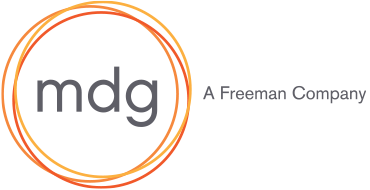
Determining when to launch an international marketing effort requires careful consideration of multiple variables, including event frequency and location, industry budgeting practices, visa and other travel requirements, as well as the competitive landscape. mdg’s International Marketing Specialist Anjia Nicolaidis shares three pieces of advice for evaluating these data points and timing international campaigns around a prospective visitor’s journey.
Build Ample Time for Awareness
To ensure international prospects are planning and budgeting for an event, they must be made aware of it well in advance. It’s important to note that while the fiscal year in most international markets runs from January to December, there are many exceptions. For example, Australia’s fiscal year runs from July to June and India’s from April to March. Regardless, we find that most international professionals plan their trade show participation a full nine to 12 months in advance. International visitors are also considering travel options around trade events long before they actually register. Many plan ancillary business or personal travel in an effort to maximize the the trip’s ROI.
With this in mind, mdg typically begins brand awareness activities a year in advance of an event (particularly if the event is new and/or if the prospects are cold) with interest-building messaging kicking in nine months in advance.
Share Program Content Six Months Out
Most organizers will start to see an uptick in conversions to registration at six months out from the event, assuming they are effectively communicating the value proposition of the event to prospects. As such, this is when campaign activities should move from building awareness and interest to creating engagement and prompting action. This means placing more emphasis on high-value content, including keynote speakers; matchmaking programs; networking events; innovations that will be featured on the expo floor; industry influencers who will be participating; and more.
Also, once prospective visitors have registered to attend, they may need to apply for a U.S. visa, depending on their country of residence. According to the U.S. Department of State, getting a visa appointment can take anywhere from a few days to three weeks based on the volume of visa applicants and the embassy’s available resources. Despite this, most U.S. embassies will advise visa applicants to apply at least three months before their planned travel date. Some visa applications require additional screening due to tighter controls of visa clearances; this can mean waiting another 60 days to receive notification of approval or denial. As marketers, we have to factor this into how we time our campaigns, especially in markets like China or India.
Prioritize Leads in the Final Push for Registrations
Marketing and messaging across all domestic and international segments in the final three months tend to focus almost exclusively on conversion. This is when we prioritize the leads in our funnel that have shown higher levels of engagement (they’ve attended in the past, visited the website, clicked on ads, watched videos, and/or otherwise interacted with our communications). This is also when we shift marketing efforts away from the most distant countries and/or those that have rigorous visa/travel restrictions and focus on the countries in closer proximity to our events. Finally, we compare how we’re tracking on a country-by-country basis with previous editions of our event to determine if there are any “last-minute” course corrections we need to make to try to close existing gaps.
Following these three guidelines will go a long way toward overcoming the unique obstacles that can occur when targeting an international audience and increasing the ROI on your international marketing efforts.
A version of this content originally appeared in PCMA Convene October 2018


